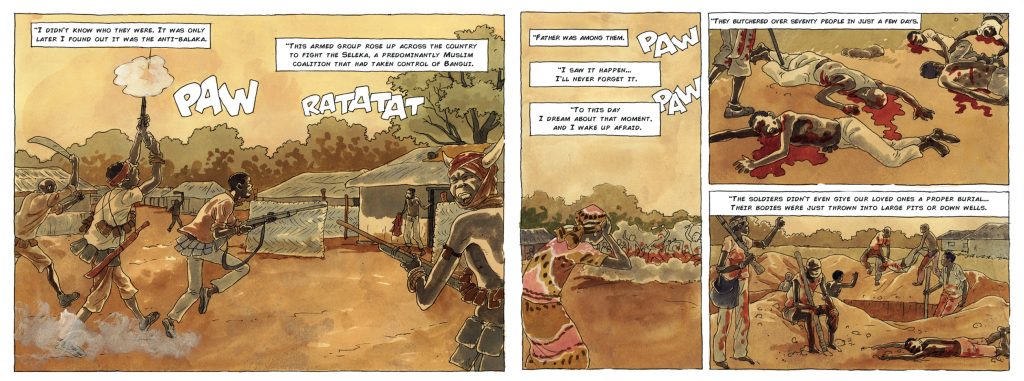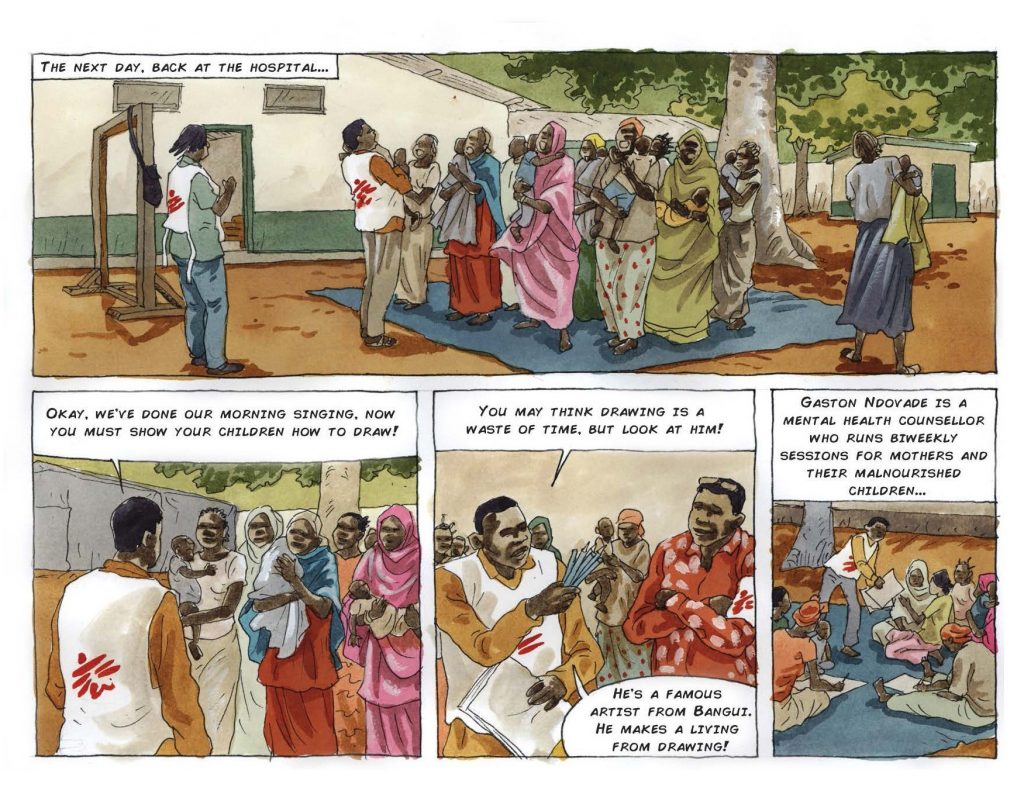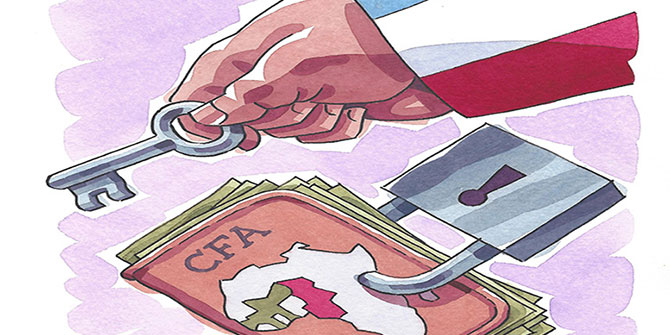The Central African Republic has experienced a prolonged period of rampant destabilisation and cycles of violence, leading to two-thirds of the country falling into the control of armed groups. Much of the limited discourse on the crisis centres on attempts to mediate peace between these groups, yet a new book, A House Without Windows, turns towards the numerous children quietly striving for survival.
A House Without Windows is a striking graphic novel written by Marc Ellison with artwork by Didier Kassaï, documenting the lives and experiences of children living through the Central African Republic’s (CAR) ongoing humanitarian crisis. The country sits second from bottom on the United Nation’s human development index, resulting from decades of corruption, cyclical coups and an intermittent armed conflict from 2012 between rival Anti-balaka and Séléka groups. As institutions of governance retreat, and public infrastructure crumbles, the situation has continued to deteriorate, resulting in serious human rights abuses, widespread internal displacement and, as Ellison phrases it within the book, ‘a childhood lost’.
The book is organised into three sections, each focused on children navigating a different side of the country; surviving on the streets of the capital, Bangui; working in the diamond mines; and seeking security within a refugee camp. Each section features interviews with children who tell their stories of survival in ‘one of the worst countries in the world to be a child’ today. Ellison and Kassaï commendably present these stories with integrity, honesty and care, providing important context for the children’s present situation, their individual ambitions, and photographing them in natural settings which do not rehash tired poverty-stricken tropes.
Yet while the children featured may be navigating poverty, their hopes and dreams remain at the centre. The interviews themselves are largely captured through Kassaï’s comic artwork, with corresponding photography from Ellison. The stunningly drawn comic makes for a unique medium to showcase these stories, which often conveys a sense of surrealism around the most harrowing tales (see the images below). However, interposed within the comics, the high-contrast photography reinforces the notion that the day-to-day experiences of these children are, true and unflinchingly bleak.

In 2006, it was estimated by UNICEF that there were over 6,000 children living on the streets of the CAR, and while some were abandoned by parents due to illness, many ran from domestic violence or have been displaced by conflict. One adult interviewed in the book says that children on the street are ‘so commonplace… they’re a nuisance that people learn to live with’. The prevailing sense of hopelessness in the community is pronounced, yet deeply troubling, as these children are exposed to physical, mental and sexual abuse. A boy interviewed describes being set on fire while asleep, explaining that ‘on the streets, kids just do bad things. They don’t need a reason’.
Whose responsibility?
Two of the most important questions the book grapples with are 1) who has primary responsibility to solve the ongoing crisis and 2) why does the CAR not receive the same media attention as other conflict-affected states?
The book addresses the first question through its interviews with children, aid workers and local leaders, many of whom self-organise to provide emergency welfare to the local community. Responsibility for tackling the crisis, can be attributed to everybody, or nobody. As the ongoing crisis is essentially a cluster of many smaller crises, knowing where to begin is difficult. However, this difficulty in addressing the crisis does not outright beget hopelessness, at least not amongst the people featured. The last section of the book focuses on a local hospital, where mothers and children are singing and drawing playfully together, re-establishing bonds damaged by the crisis. In many ways, the book is a testament to hope, and how local people, with the support from international NGOs, coalesce to support each other. Though, in terms of addressing the crisis at it’s root, the reader is left to ponder (or research further) on the dearth of national and international political and media institutions, who are notably absent from this book.
On the second question, addressing the country’s comparatively little media attention, through an interview with Aude Thomet, a Médecins Sans Frontières field coordinator, we come to understand the book’s namesake. Aude describes the CAR as ‘a house without windows’, going further to explain that, without windows, outsiders cannot see into this world. Although the book does not go further to expand on why there are no windows into this world, it can be inferred that there are no easy answers. Ultimately the book positions itself to the audience as a window the country lacks.
Concluding thoughts
A House without Windows excels as a starting point for audiences unaware of the extent of the CAR’s humanitarian crisis today. It does not attempt to advance methods to remedy the many problems besetting the country, but this is not its intention. Ellison and Kassaï’s book seeks to raise awareness and drive attention. The ‘street kids’, local leaders, teachers and NGOs within the country coordinate welfare and support within the vacuum of central governance, highlighting how mobilising and organising make a vital difference, especially when hope seems difficult to come by.
The 360° video documentary ‘A House Without Windows’ is available to view on YouTube.
The book can be purchased on Waterstones from 1 April 2021.






